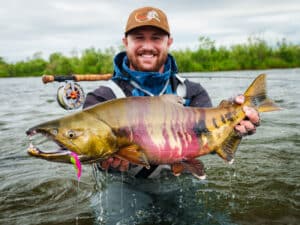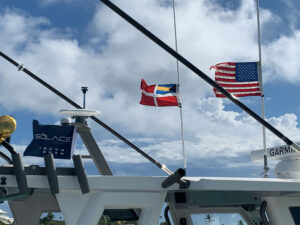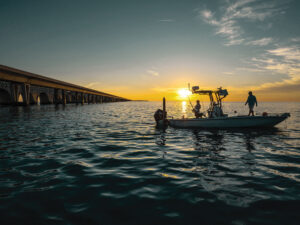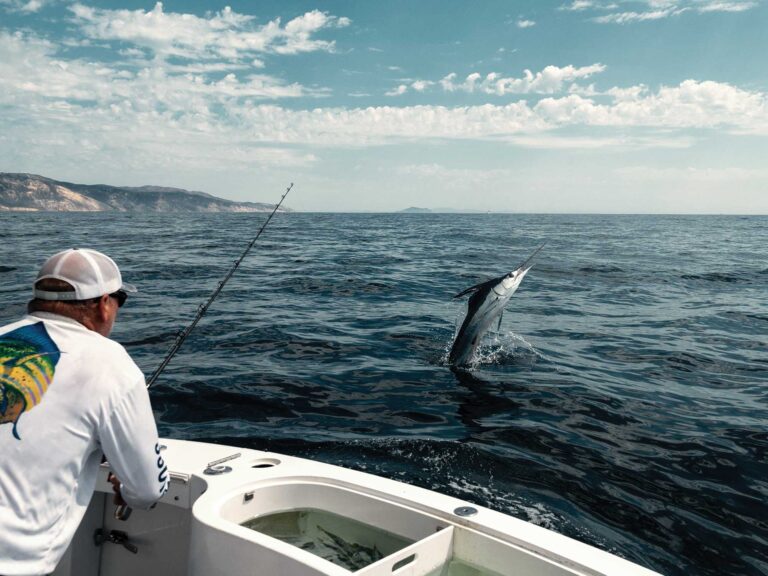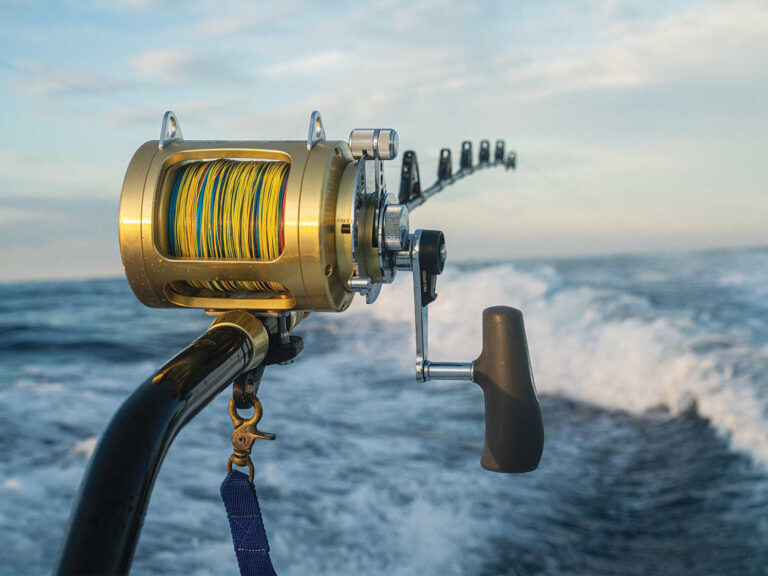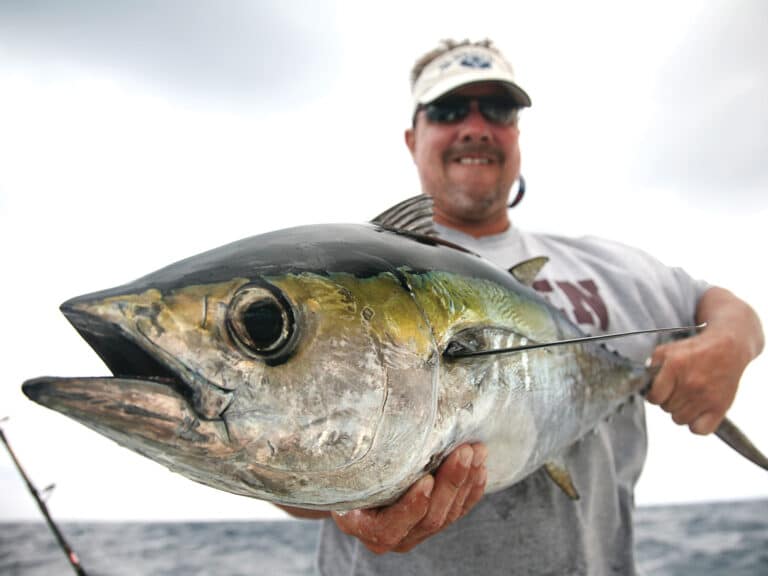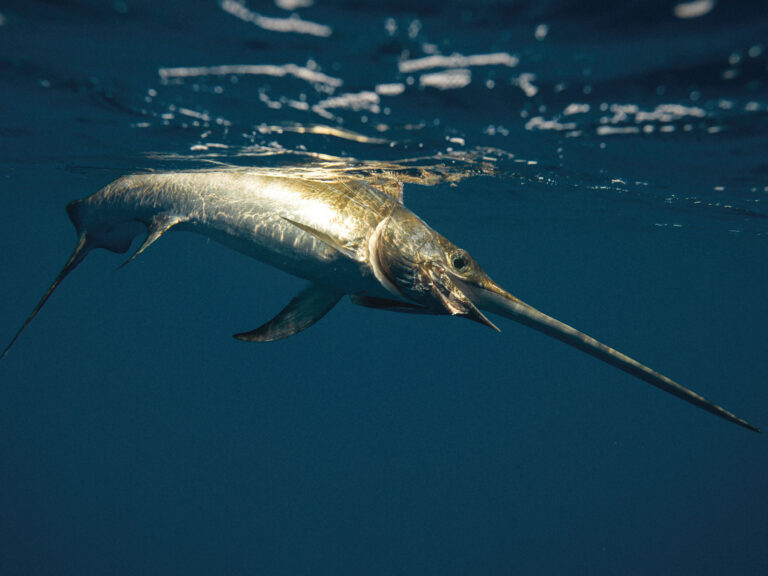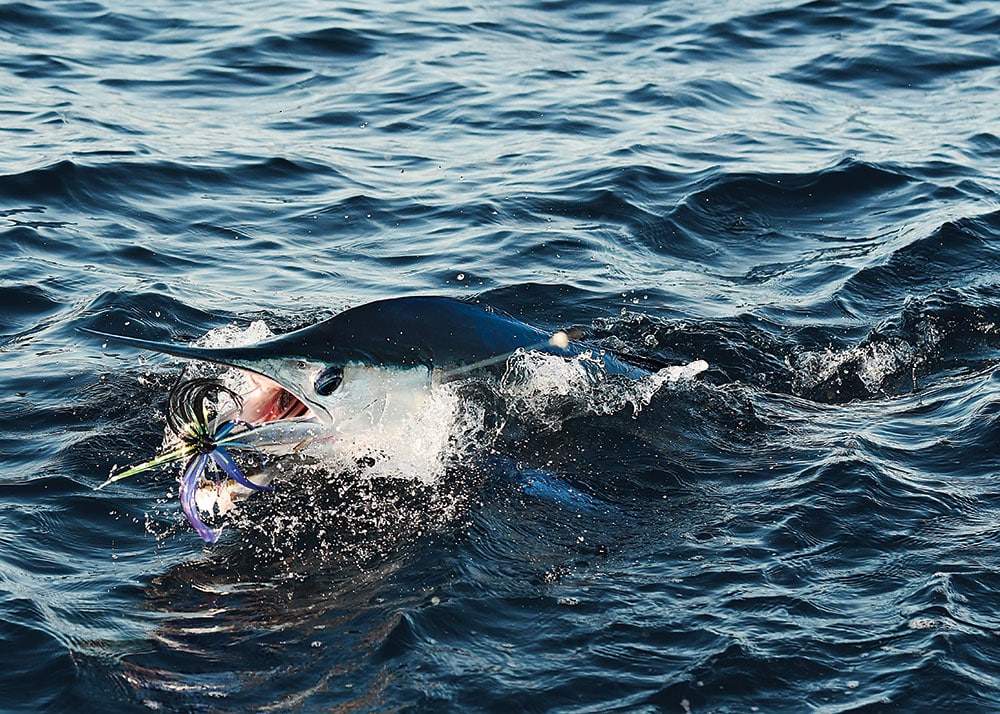
The bluefin bite on the 30-fathom curve off New Jersey was hot as we set out the trolling pattern near the wreck of the Atlantic Princess. The lumps and ridges in the area had been invaded by massive schools of sand eels, and finback whales and long-beaked dolphin were taking advantage of the bounty. but They were not alone. Bluefin tuna ranging from 35 to 200 pounds were in play, and in a big way. The VHF was alive with chatter as the first hookup of the morning was announced.
“Whatcha get bit on?” came the first query.
“Purple-and-black Joe Shute’s,” was the reply.
That refrain would be repeated many times as the day wore on, with some fish falling to spreader bars, but most hitting ballyhoo adorned with those magic weighted skirts placed strategically in trolling patterns. But bluefin are just one of the pelagics that fall for the deadly combo. Farther offshore, they catch all three species of canyon tuna, plus white and blue marlin, mahi and wahoo. Now, that’s a producer.
Who’s ’Hoo
While numerous tackle companies offer versions of these lures, such as TN-Tackle’s HooHead, Magictail’s Hoo Magic, Bluewater Candy’s JAG series and Iland’s Crusader, Capt. Joe Shute’s Fish Finder Tackle, a small company in Atlantic Beach, North Carolina, cranks them out in abundance each year in a variety of head designs, weights, colors and adornments.
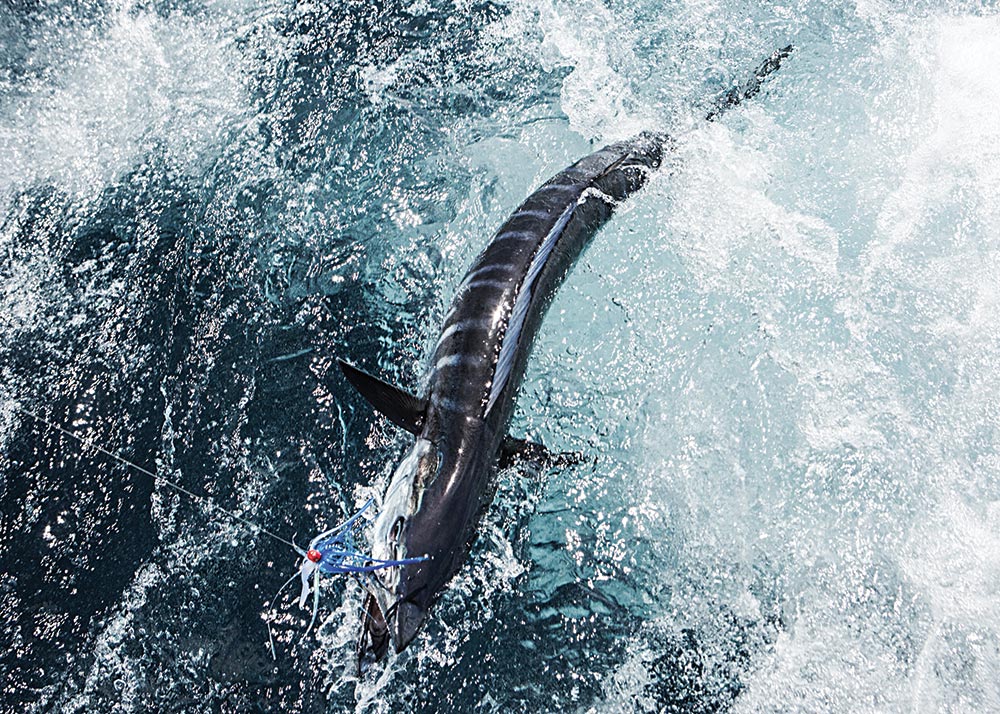
Shute, who personally ties every lure, explains that his original model was a 3-ouncer, but he added lighter and heavier versions, and did a little innovating. The Keel Weighted models keep the bait and the split color of the lures running dark side up, light side down. He designed the Flat Liner, an 8-ounce model, specifically for bigeye -tuna, which rise on a flat-line bait so hard, the bow wave they -create throws lighter lures out of the way. The Big Hole -series was initially designed to be used over hookless baits on dredges, but they quickly found other uses. Anglers who buy pre-rigged ballyhoo could just slip the loop eye through the oversize hole and drop it into the spread, and they made quick-changing lures a breeze. No having to rerig the ballyhoo, just unclip the rig, slip one off, and slip on another. The Yellowfin model in 1 and 2 ounces is ideal for canyon fishing with small and medium ballyhoo, and West Coast striped marlin sharpies have been using it to do the job on their local marlin population.
Regardless of the manufacturer, the concoction starts with a painted bullet-shaped leadhead, and some combination of long nylon hair, crystal flash and Mylar tied in reverse so that out of the water, it covers the head. But it comes alive in the water as the skirt flows back over the bait, billowing around the ballyhoo beneath and adding enticing motion, color and flash.
Pros Know
Capt. Mark DeBlasio runs the charter boats Blue Runner and Waterproof out of Point Pleasant, New Jersey, and is one of the most successful -tuna hunters on the mid-Atlantic coast. Few captains come close to his tally of often-elusive bigeye tuna each season, but he is equally dialed in on bluefins and yellowfins. Like many captains, his go-to lures are weighted skirts over ballyhoo.
“Ballyhoo lures like Shutes and HooHeads are always in my spread,” he says. “They are especially effective on big bluefin and bigeye, but will catch pretty much everything we encounter offshore. In a trolling pattern, they are as close a match to live bait as you can get.”
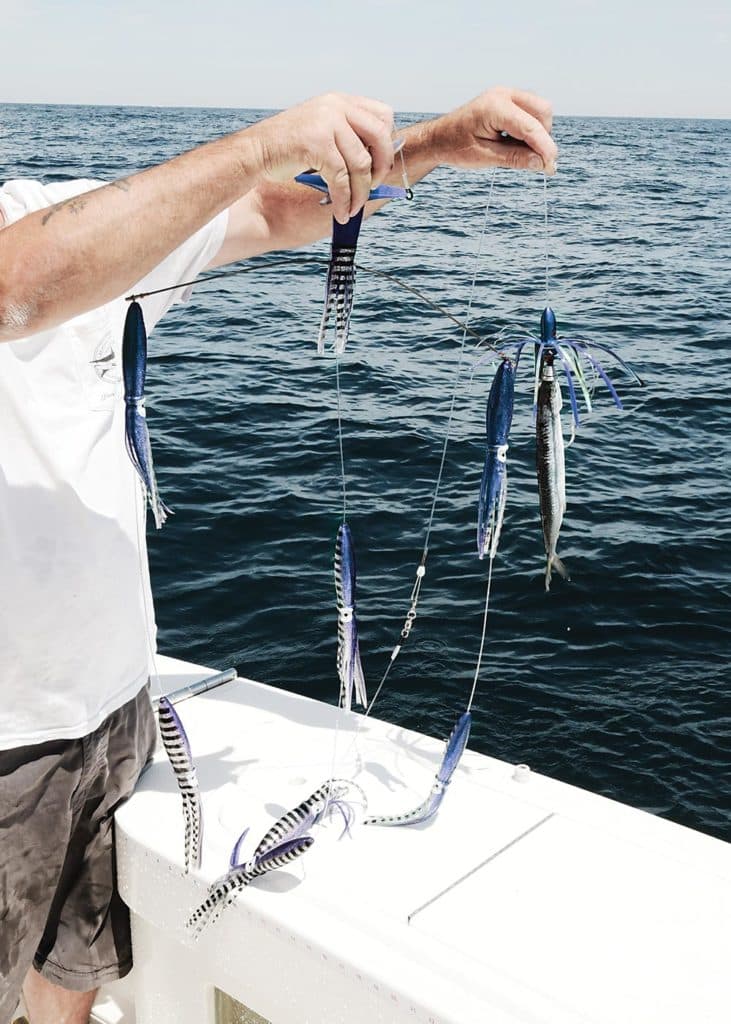
DeBlasio prefers 3-ounce keel-weighted skirts for most of his trolling, but with an additional ½-ounce egg sinker that gets tucked under the bait’s gill plate during the rigging process. This rig can be fished on 50- or 80-pound outfits, while lighter 1- to 2-ounce skirts work best with small and medium outfits ( 20- and 30-pound class) for white marlin and yellowfins. Keep in mind, there are versions of these skirts that weigh up to 8 ounces for various applications, such as fishing in rough seas or to keep a shotgun bait—placed a couple of football fields back—in the water.
“There are a lot of colors available, and they have their place, but mostly I troll crystal hair mixed with Mylar so the bait shows through,” DeBlasio says. “It provides lots of extra flash in the pattern while putting the ballyhoo front and center. Early and late in the day, dark colors tend to get more bites, and some days white mixed with pink, blue or other hot colors will catch fish, but crystal hair is our most consistent producer.”
Proper Placement
His favorite positions in the spread? “It depends,” he says. “Most of the time, these lure-bait combos work best mixed around a pair or more of spreader bars and dredges.”

DeBlasio favors running them in the flat-line, long–rigger and shotgun positions. The long–rigger placement is usually set to trail a spreader bar from the short–rigger position, and the heavier heads let him run the shotgun bait far behind the rest of the pattern, a tactic that is particularly effective on bluefins, when they are fussy.
Read Next: Types of Trolled Ballyhoo Rigs
When canyon fishing for yellowfins, DeBlasio keeps his pattern tight to encourage multiple hookups, but he opens it up more for bluefins and bigeyes. In the canyons, he frequently mixes up the pattern with skirted and naked ballyhoo rigged split-bill-style, especially when white marlin are in the area. He also likes to use the weighted ballyhoo rigs as stinger baits on his spreader bars because the extra weight keeps the bar tight to the surface in rough water, and they add a natural-bait target for attacking gamefish.

So, the next time you’re offshore and hear another boat on the VHF talking about catching fish on a Joe Shute, you’ll know what they mean and realize it’s time for you to deploy your own rigged-and-ready weighted ballyhoo skirts.

